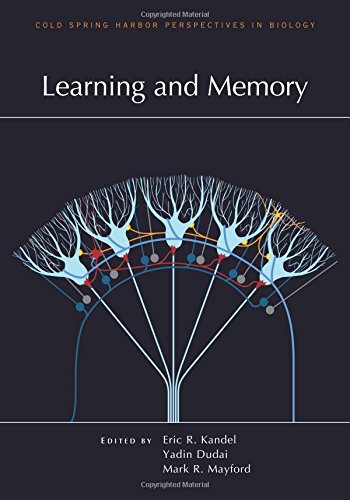Artículos relacionados a Learning and Memory (Cold Spring Harbor Perspectives...

Sinopsis
We learn and remember information by modifying synaptic connections in the neuronal networks of our brain. Depending on the type of information being stored, these changes occur in different regions and different circuits of the brain. The underlying circuit mechanisms are beginning to be
understood. These mechanisms are capable of storing or reconstructing memories for periods ranging up to a lifetime, but they are also error-prone, as memories can be distorted or lost.
Written and edited by experts in the field, this collection from Cold Spring Harbor Perspectives in Biology examines important aspects of the neurobiology of learning and memory. Contributors review the various types of memory and the anatomical architectures and specialized cells involved. The
induction of synaptic and cell-wide changes during memory encoding, the transcriptional and translational programs required for memory stabilization, the molecular signals that actively maintain memories, and the activation of neural ensembles during memory retrieval are comprehensively covered.
The authors also discuss the model organisms and state-of-the-art technologies used to elucidate these processes. This volume will serve as a valuable reference for all neurobiologists and biomedical scientists as well as for cognitive and computational neuroscientists wishing to explore the
remarkable phenomena of learning and memory.
"Sinopsis" puede pertenecer a otra edición de este libro.
Reseña del editor
Our brains learn and remember information by modifying synaptic connections in neuronal networks. These changes occur in different circuits and regions of the brain, depending on the occasion. The underlying molecular mechanisms are dynamic and complex, but they are also error-prone, as memories can be distorted or lost.
Written and edited by experts in the field, this collection from Cold Spring Harbor Perspectives in Biologyexamines all aspects of the neurobiology of learning and memory. Contributors review the various types of memory (explicit and implicit) and the anatomical regions and specialized cells (e.g., place cells and grid cells) involved. The induction of synaptic changes during memory encoding, the transcriptional and translational programs required for memory stabilization, the molecular signals that actively maintain memories, and the activation of neural ensembles during memory retrieval are comprehensively covered.
The authors also discuss the use of model organisms (e.g., Aplysia) and state-of-the-art technologies (e.g., fMRI) to elucidate these processes. This volume will serve as a valuable reference for all neurobiologists and biomedical scientists wishing to explore the remarkable phenomena of learning and memory.
"Sobre este título" puede pertenecer a otra edición de este libro.
(Ningún ejemplar disponible)
Buscar: Crear una petición¿No encuentra el libro que está buscando? Seguiremos buscando por usted. Si alguno de nuestros vendedores lo incluye en IberLibro, le avisaremos.
Crear una petición
